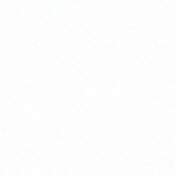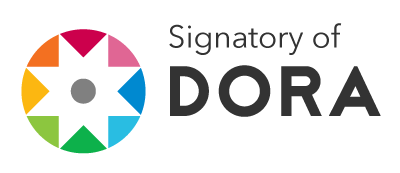Brechas de Género en Computación y el Sector de la Tecnologías de la información y las comunicaciones en Uruguay: Análisis y Desafíos
Resumen
La escasa participación de mujeres en el ámbito de las Tecnologías de la Información y la Comunicación (TIC) sigue siendo un tema relevante a nivel global debido a las persistentes disparidades de género en este sector. Las explicaciones a este fenómeno señalan que es resultado de múltiples causas que abarcan aspectos individuales, interpersonales y estructurales de los roles de género. A nivel nacional, a pesar de que las mujeres constituyen más del 60% de las matrículas en la educación terciaria, su presencia en las carreras fundamentales para el sector TIC apenas alcanza el 23% (CUTI, 2019). Este trabajo busca identificar los factores explicativos sobre la baja participación de las mujeres en las carreras relacionadas con la computación. Para ello, primero se realiza una revisión y categorización de la literatura especializada a nivel internacional. En segundo lugar, se lleva a cabo un análisis de la percepción de informantes calificadas sobre las causas de la subrepresentación de mujeres en las carreras relacionadas con la computación a nivel nacional. La combinación de estos dos enfoques analíticos permite problematizar y sintetizar la influencia de los roles de género como factores explicativos en las distintas etapas educativas y a lo largo del curso de vida. Los resultados obtenidos tienen el potencial de contribuir al diseño de políticas destinadas a abordar las desigualdades de género en el sector de las TIC.
Descargas
Citas
Bortagaray, I. (2014). “Memoria de análisis y monitoreo de los Consejos Sectoriales durante los años 2013 - 2014.” Instituto de Desarrollo Sostenible, Innovación e Inclusión Social (IDIIS) Universidad de la República – Sede Tacuarembó
Betarte, G. et al (2008). “Área Tecnologías de la Información y Comunicación Informe final de la consultoría sobre Tecnologías de la Información y comunicación en el marco del Plan Estratégico Nacional en Ciencia, Tecnología e Innovación.” Montevideo, Uruguay. ANII.
Bianchi, C. y Schnoeck, M. (2009). “Ciencia, tecnología e innovación en Uruguay: Desafíos estratégicos, objetivos de política e instrumentos. Propuesta para el PENCTI 2010-2030.” Montevideo, Uruguay. ANII.
Bozzon, R., Murgia, A., Poggio, B., & Rapetti, E. (2017). Work–life interferences in the early stages of academic careers: The case of precarious researchers in Italy. European Educational Research Journal, 16(2-3), 332-351. https://doi.org/10.1177/1474904116669364
Caprile et al. (2012). Meta-analysis of gender and science research:synthesis report. Publications Office. https://data.europa.eu/doi/10.2777/75176
Casad, B. J., Hale, P., & Wachs, F. L. (2017). Stereotype Threat Among Girls: Differences by Gender Identity and Math Education Context. Psychology of Women Quarterly, 41(4),513-529. https://doi.org/10.1177/0361684317711412
Cech, E. A. (2013). Ideological Wage Inequalities? The Technical/Social Dualism and the Gender Wage Gap in Engineering. Social Forces, 91(4), 1147-1182. https://doi.org/10.1093/sf/sot024
Cheryan, S., Plaut, V. C., Davies, P. G., & Steele, C. M. (2009). Ambient belonging: How stereotypical cues impact gender participation in computer science. Journal of Personality and Social Psychology, 97(6), 1045-1060. https://doi.org/10.1037/a0016239
Convertino, C. (2019). Nuancing the discourse of underrepresentation: A feminist post-structural analysis of gender inequality in computer science education in the US. 15.
CUTI; ANDE (2019). Formación académica en TI. Informe 2019. https://cuti.org.uy/wp-content/uploads/2020/12/formacion-academica-en-tic-2019-cuti-vf2.pdf
CUTI (2021). Memoria anual. 1 de abril de 2020- 31 de marzo de 2021. https://cuti.org.uy/wp-content/uploads/2022/03/Memoria-anual-2020-2021_VF.pdf
Charum, J., ed., Meyer, J.-B., & ed. (1998). Hacer ciencia en un mundo globalizado: La diáspora científica colombiana en perspectiva. 252.
Else-Quest, N. M., Hyde, J. S., & Linn, M. C. (2010). Cross-national patterns of gender differences in mathematics: A meta-analysis. Psychological Bulletin, 136(1), 103-127. https://doi.org/10.1037/a0018053
Else-Quest, N. M., Mineo, C. C., & Higgins, A. (2013). Math and Science Attitudes and Achievement at the Intersection of Gender and Ethnicity. Psychology of Women Quarterly, 37(3), 293-309. https://doi.org/10.1177/0361684313480694
Fernández, M., Galván, E., Robaina, S., Tenenbaum, V., Tomassini, C. (2024). Brechas de género en las trayectorias académicas en Uruguay: formación, producción y acceso a cargos. https://ojs.revistacts.net/index.php/CTS/article/view/510/584
Fouad, N. A., Chang, W.-H., Wan, M., & Singh, R. (2017). Women’s Reasons for Leaving the Engineering Field. Frontiers in Psychology, 8, 875. https://doi.org/10.3389/fpsyg.2017.00875
Frieze, C., Quesenberry, J. L., Kemp, E., & Velázquez, A. (2012). Diversity or Difference? New Research Supports the Case for a Cultural Perspective on Women in Computing. Journal of Science Education and Technology, 21(4), 423-439. https://doi.org/10.1007/s10956-011-9335-y
Galvez, C. (2018). Análisis de co-palabras aplicado a los artículos muy citados en Biblioteconomía y Ciencias de la Información (2007-2017). 10.
Guo, J., Parker, P. D., Marsh, H. W., & Morin, A. J. S. (2015). Achievement, motivation, and educational choices: A longitudinal study of expectancy and value using a multiplicative perspective. Developmental Psychology, 51(8), 1163-1176. https://doi.org/10.1037/a0039440
Graham, J. W., & Smith, S. A. (2005). Gender differences in employment and earnings in science and engineering in the US. Economics of Education Review, 24(3), 341-354. https://doi.org/10.1016/j.econedurev.2004.06.005
Hirata, H., Kergoat, D., & Murad, F. (2007). NOVAS CONFIGURAÇÕES DA DIVISÃO SEXUAL DO TRABALHO. Cadernos de Pesquisa, 37(132), 15.
Porcile, G., & Holland, M. (2005). Brecha tecnológica y crecimiento en América Latina. En: Heterogeneidad estructural, asimetrías tecnológicas y crecimiento en América Latina-LC/W. 35-2005-p. 40-71.
Inda, M. (2013). Gender differences in applying social cognitive career theory in engineering students. Journal of Vocational Behavior, 10.
Jeng, H.-L., & Liu, G.-F. (2016). Test interactivity is promising in promoting gender equity in females’ pursuit of STEM careers. Learning and Individual Differences, 49, 201-208. https://doi.org/10.1016/j.lindif.2016.06.018
Kitchenham, B. and Charters, S. (2007) Guidelines for Performing Systematic Literature Reviews in Software Engineering, Technical Report EBSE 2007-001, Keele University and Durham University Joint Report.
Leaper, C., Farkas, T., & Brown, C. S. (2012). Adolescent Girls’ Experiences and Gender- Related Beliefs in Relation to Their Motivation in Math/Science and English. Journal of Youth and Adolescence, 41(3), 268-282. https://doi.org/10.1007/s10964-011-9693-z
Lent, R., López, A., Lopez, F., & Sheu, H.-B. (2008). Social cognitive career theory and the prediction of interests and choice goals in the computing disciplines. Journal of Vocational Behavior - J VOCAT BEHAV, 73, 52-62. https://doi.org/10.1016/j.jvb.2008.01.002
Lent, R. W., Brown, S. D., & Hackett, G. (1994). Toward a Unifying Social Cognitive Theory of Career and Academic Interest, Choice, and Performance. Journal of Vocational Behavior, 45(1), 79-122. https://doi.org/10.1006/jvbe.1994.1027
Litzler, E., Mody-Pan, P., & Brainard, S. (2011). Intersections of Gender and Race in Engineering Education. 2011 ASEE Annual Conference & Exposition Proceedings, 22.953.1-22.953.11. https://doi.org/10.18260/1-2--18157
Master, A., Cheryan, S., & Meltzoff, A. N. (2016). Computing whether she belongs: Stereotypes undermine girls’ interest and sense of belonging in computer science. Journal of Educational Psychology, 108(3), 424-437. https://doi.org/10.1037/edu0000061
Mesa Interinstitucional Mujeres en Ciencia, Innovación y Tecnología MIMCIT (2020). Mujeres en Ciencia, Tecnología e Innovación en Uruguay: un factor clave para avanzar en igualdad de género y desarrollo sostenible. https://www.anii.org.uy/upcms/files/listado-documentos/documentos/informe-pa-s-vf.pdf
Nazareth, A., Herrera, A., & Pruden, S. M. (2013). Explaining sex differences in mental rotation:Role of spatial activity experience. Cognitive Processing, 14(2), 201-204. https://doi.org/10.1007/s10339-013-0542-8
Newcombe, N. (2010). Picture this: Increasing math and science learning by improving spatial thinking. American Educator, 34, 29-43.
OIT (2016). Women at Work: Trends 2016 (Geneva)
Prokos, A., & Padavic, I. (2005). An Examination of Competing Explanations for the Pay Gap among Scientists and Engineers. Gender and Society, 19(4), 523-543.
Riegle-Crumb, C., King, B., Grodsky, E., & Muller, C. (2012). The More Things Change, the More They Stay the Same? Prior Achievement Fails to Explain Gender Inequality in Entry Into STEM College Majors Over Time. American Educational Research Journal, 49(6), 1048-1073. https://doi.org/10.3102/0002831211435229
Romo-Fernández, L. M., Guerrero-Bote, V. P., & Moya-Anegón, F. (2013). Co-word based thematic analysis of renewable energy (1990–2010). Scientometrics, 97(3), 743-765. https://doi.org/10.1007/s11192-013-1009-5
Sax, L. J., Lehman, K. J., Jacobs, J. A., Kanny, M. A., Lim, G., Monje-Paulson, L., & Zimmerman, H. B. (2017). Anatomy of an Enduring Gender Gap: The Evolution of Women’s Participation in Computer Science. The Journal of Higher Education, 88(2), 258-293. https://doi.org/10.1080/00221546.2016.1257306
Tomassini, C., & Urquhart, M. E. (2011). Mujeres e Ingeniería en Computación de la UDELAR, Uruguay: Cambios y permanencias. 14.
Tomassini, Cecilia. (2012). Ciencia Académica y Género: 196.
Vitores, A., & Gil-Juárez, A. (2016). The trouble with ‘women in computing’: A critical examination of the deployment of research on the gender gap in computer science. Journal of Gender Studies, 25(6), 666-680. https://doi.org/10.1080/09589236.2015.1087309
UNESCO (2017). Cracking the code: girls' and women's education in science, technology, engineering and mathematics (STEM). United Nations Educational, Scientific and Cultural Organization. https://doi.org/10.54675/QYHK2407
Unión Europea. (2018). Women in the digital age: Final report. Publications Office. https://data.europa.eu/doi/10.2759/526938
Uruguay XXI (2023). Sector TIC en Uruguay. https://www.uruguayxxi.gub.uy/uploads/informacion/e534236bc01775dcc31a5be4e640c1ebba577946.pdf
Derechos de autor 2024 Inti Sebastián Berro Nión, Cecilia Tomassini

Esta obra está bajo licencia internacional Creative Commons Reconocimiento 4.0.







.jpg)




















